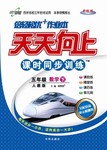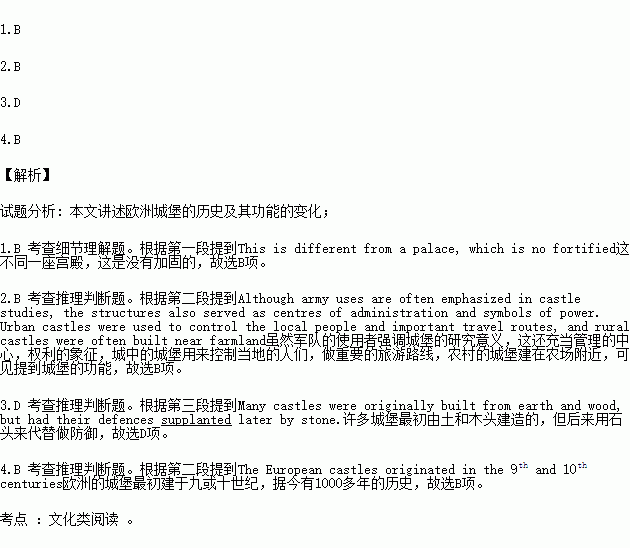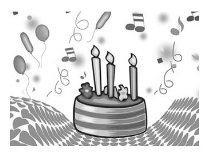题目内容
A castle is a type of fortified(加固的)structure built in Europe and the Middle East during the Middle Ages. This is different from a palace, which is no fortified-though there are many similarities among these types of construction. Usage of the term has varied over time and has been applied to diverse structures.
The European castles originated in the 9th and 10th centuries, resulting in its land divided among nobles. These nobles built castles to control the area surrounding them, and they were both offensive and defensive structures. Although army uses are often emphasized in castle studies, the structures also served as centres of administration and symbols of power. Urban castles were used to control the local people and important travel routes, and rural castles were often built near farmland.
Many castles were originally built from earth and wood, but had their defences supplanted later by stone. In the late 12th and early 13th centuries, scientific approaches to castle defence appeared, and could function to maximize the castle’s firepower. These changes in defence came from a mixture of castle technology. Although gunpowder was introduced to be built well into the 16th century, improved cannon(大炮)fire made them uncomfortable places to live in. As a result, true castles went into decline.
From the 18th century onwards, there was a renewed interest in castles with the construction of mock(仿造的)castles, part of a romantic revival(复活)of Gothic architecture, but they had no defensive purpose.
1.According to the first paragraph, we can know .
A. the palace is a fortified structure
B. the castle is different from the palace
C. the palace changed over time
D. the structures of the castle in different ages look the same.
2.what does the second paragraph mainly talk about?
A. Symbols of the European castles.
B. Functions of the European castles.
C. Influences of the European castles.
D. Characteristics of the European castles.
3.The underlined word “ supplanted ” in the third paragraph is closet in meaning to “ “.
A. produced B. saved C. protected D. replaced
4. What can be inferred from the river?
A. Castles have nothing in common with palaces.
B. Castles have a history of more than 1,000 years in Europe.
C. Castles were mainly used for defensive purposes after the 18th century.
D. The introduction of gunpowder instantly influenced castle building in Europe.
 赢在课堂名师课时计划系列答案
赢在课堂名师课时计划系列答案 天天向上课时同步训练系列答案
天天向上课时同步训练系列答案 阳光课堂同步练习系列答案
阳光课堂同步练习系列答案

